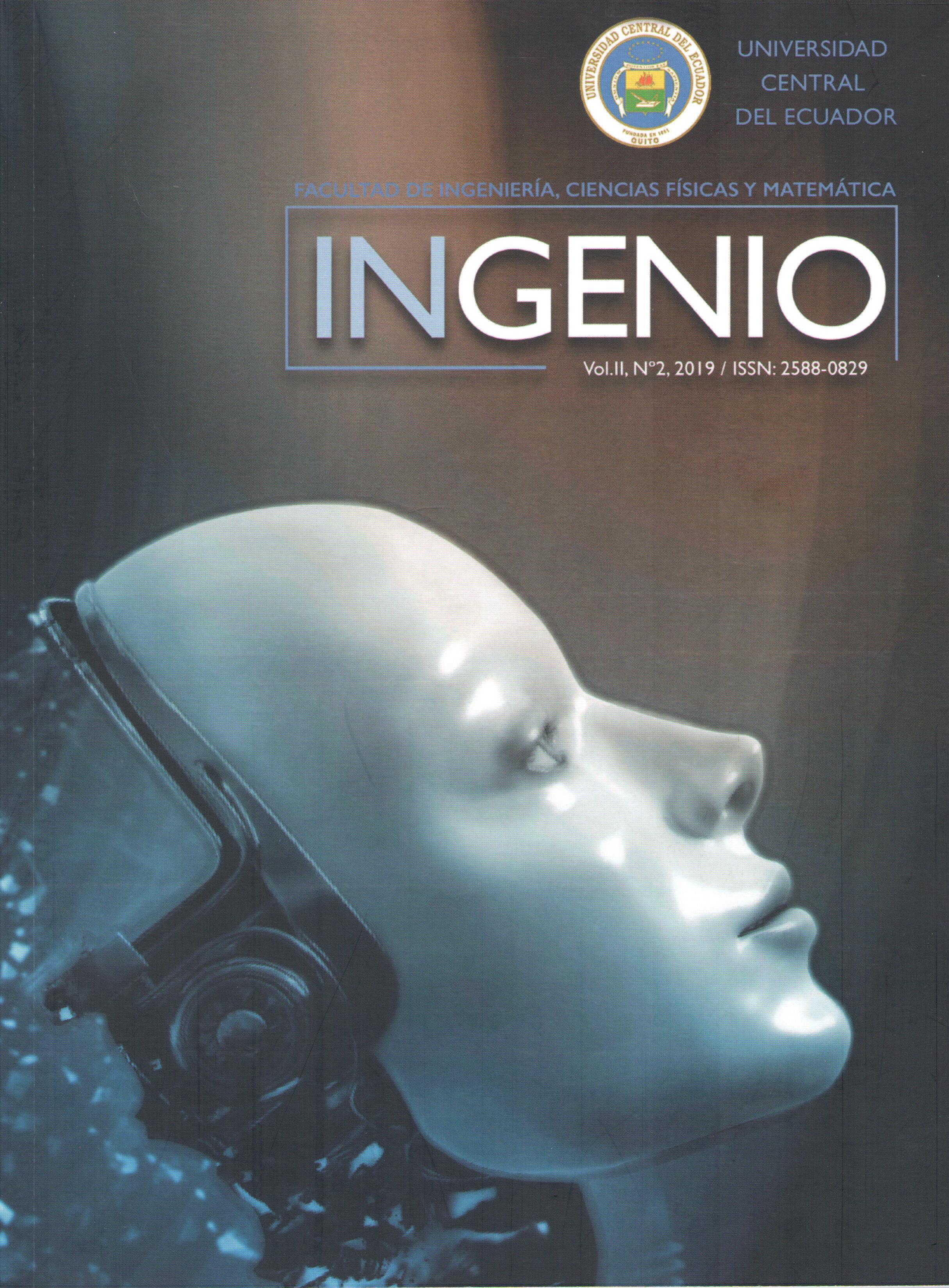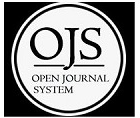Materiales Cementantes Compuestos (CCM): Estado del Arte, Situación Actual y Aplicaciones en la Ingeniería Civil
DOI:
https://doi.org/10.29166/ingenio.v2i2.1640Palabras clave:
Materiales Cementantes Compuestos, Ingeniería de Materiales, Mecánica del Medio Continuo, Tecnología del Hormigón, Ciencia e IngenieríaResumen
El presente artículo trata acerca del desarrollo de los Materiales Cementantes Compuestos (CCM), desde el hormigón convencional hasta los más complejos como los compuestos con propiedades auto-reparantes y auto-sensitivas. Además se hace una descripción de los estudios más relevantes de este tema, así como las propiedades que los CCM presentan y sus posibles aplicaciones en el desarrollo de nuevos materiales para la Ingeniería Civil.
Descargas
Métricas
Citas
AÏTCIN P.-C. (1998). High-Performance Concrete, E&FN Spon, London, UK.
ASKELAND, D. R., Wright, W. J. (2017). Ciencia e Ingeniería de Materiales, 7ma edición, Cengage Learning Editores S.A., México, D.F.
BADAK, F., Abolfazl, H., Alimorad. R., Parviz. G. (2014). Preparation and Mechanical Properties of Graphene Oxide: Cement Nanocomposites. The Scientific World Journal, Volumen 2014. Artículo ID 276323. 10 págs. Hindawi Publishing Corporation. DOI: 10.1155/2014/276323
BAERA, C., Mircea, C., Szilagyi. H. (2015). Cementitious Composite Materials with improved Self-Healing Potential. Constructii, Bucharest. Romania.
BALAKRISHNA. B. (2013). Cellular Concrete. An alternative for sustainable design & Construction. The Masterbuilder.
BANG, J., Prabhu, G., Jang. Y., Kim. Y. (2015). Development of Ecoefficient Engineered Cementitious Composites Using Supplementary Cementitious Materials as a Binder and Bottom Ash Aggregate as Fine Aggregate. International Journal of Polymer Science, Volumen 2015. Artículo ID 681051. 12 págs. Hindawi Publishing Corporation. DOI: 10.1155/2015/681051
BARBERO, M., Flores, N., Guardia, C. (2017). Influence of the addition of waste graphite powder on the physical and microstructural performance of hydraulic lime pastes. Construction and Building Materials, Volumen 149, 15 de septiembre 2017, págs. 599-611, DOI: 10.1016/j.conbuildmat.2017.05.156
CALLISTER, W. D., Rethwisch, D. G. (2009). Materials Science and Engineering: An Introduction, 8va edición. Hoboken: John Wiley.
CARPIO, V. (2014a). Memorias de Investigación sobre Hormigones Ligeros de Alto Desempeño Reforzados con Fibras “HPLWFRC” para el concurso ACI FRC Bowlling Ball Competition 2014. Reno/Nevada, EE.UU.
CARPIO, V. (2014b). Módulo estático de elasticidad del hormigón - Caso: ECUADOR. “Estudio, Investigación Final e Informe Global de las Tesis sobre Módulo de Elasticidad del Hormigón realizadas en la Escuela de Ingeniería Civil, Facultad de Ingeniería, Ciencias Físicas y Matemática de la Universidad Central del Ecuador. Quito, Ecuador, 2014, 39 págs. ISBN: 978-9942-20-405-9
CARPIO, V., Molina, M. (2016). Análisis experimental de un hormigón elaborado con residuos industriales de polvo de grafito. Ponencia del área de Infraestructura, Desarrollo Urbano, Industria e Innovación, IV Congreso REDU. Investigación que obtuvo el 2do lugar en el Concurso de Posters Científicos. Universidad de las Fuerzas Armadas (ESPE), Sangolquí, Ecuador. Recuperado de http://www.redu.edu.ec/images/MEMORIAS-IV-CONGRESO-2016-Comprimido.pdf
CARRERA, D., Cevallos, D. (2016). Bases de diseño para la construcción sostenible con bloque alivianado con poliestireno (tesis de pregrado). Universidad Central del Ecuador, Quito – Ecuador.
COLLEPARDI, S., Coppola, L., Troli, L., Collepardi, M. (1997). Mechanical properties of modified reactive powder concrete. ACI Special Publication, Volumen: 173 (1), págs. 1-22
ESMAEILI, K. (2012). Elastic Composite Reinforced Lightweight Concrete as a type of Resilient Composite Systems. International Journal of Innovative Technology and Creative Engineering (IJITCE), Volumen 2, No.8. ISSN: 2 045-8711, Agosto 2012.
Federal Highway Administration Research and Technology (FHWA). (2013). Ultra-High Performance Concrete: A State-Of-The-Art Report for The Bridge Community. CHAPTER 3. MECHANICAL PROPERTIES. FHWA-HRT-13-060.
FEHLING, E., Schmidt, M., Stürwald, S. (2008). Ultra high performance concrete (UHPC): Proceedings of the Second International Symposium on Ultra High Performance Concrete. Kassel, Germany, March 05-07, 2008. Kassel: Kassel University Press.
FISHER, F. (2006). Chapter 15: Stress analysis. Myer Kutz. Mechanical Engineers' Handbook: Materials and mechanical design. Volumen 1, 3ra edición. John Wiley & Sons, Inc.
FLORES, N., Barbero, M., Bustamante, R. (2017). Filler de grafito reciclado de EDM en pastas de yeso. Anales de Edificación, Volumen 3, No. 2, págs. 27-38 (2017), ISSN: 2444-1309, DOI: 10.20868/ade.2017.3569
GUPTA, R.B., Chander, S. (2017). Material Science [For Civil Engineering]. Satya Prakashan. New Delhi. India.
GRAYBEAL, B. (2013). Ultra-High Performance Concrete: A State-of-the-Art Report for the Bridge Community. FHWA-HRT-13-060. Recuperado de https://www.fhwa.dot.gov/publications/research/infrastructure/structures/hpc/13060/13060.pdf
HAMAD, A. J. (2017) Size and shape effect of specimen on the compressive strength of HPLWFC reinforced with glass fibres, Journal of King Saud University - Engineering Sciences, Volume 29, Issue 4, 2017, Pages 373-380, ISSN 1018-3639. DOI: 10.1016/j.jksues.2015.09.003
HAN, B., Yu, X., Ou, J. (2015). Self-Sensing Concrete in Smart Structures. Butterworth-Heinemann. Elsevier. DOI: 10.1016/C2013-0-14456-X
HAZELWOOD, T. (2015). Investigation of a novel self-healing cementitious composite material system (tesis de doctorado), Cardiff University.
HENDRIK, G. (2005). Background Facts and Issues Concerning Cement and Cement Data. US Dept. of the Interior & US Geological Survey.
Instituto Español del Cemento y sus Aplicaciones (IECA). (s.f). Historia del Cemento. Recuperado de https://www.ieca.es/historia-del-cemento/
KHMUROVSKA, Y., Štemberk, P. (2018). Comparison of engineered cementitious composites and concrete for strengthening of concrete structural details using RBSM. MATEC Web of Conferences 146, 02004. 9th International Scientific Conference Building Defects (Building Defects 2017). DOI: 10.1051/matecconf/201814602004
KOSMATKA, S. H., Kerkhoff, B., Panarese, W. C., Tanesi, J. (2004). Diseño y Control de Mezclas de Concreto. Portland Cement Association. Skokie/Illinois, EE.UU.
KUSUMAWARDANINGSIH. Y., Fehling. E., Ismail. M., Aboubakr. A. A. M. (2015). Tensile Strength Behavior of UHPC and UHPFRC, Procedia Engineering, Volume 125, 2015, Pages 1081-1086, ISSN 1877-7058. DOI: 10.1016/j.proeng.2015.11.166.
LI, V.C. (2008). Engineered Cementitious Composites (ECC) – Material, Structural, and Durability Performance. Concrete Construction Engineering Handbook, Capítulo 24, Ed. E. Nawy, CRC Press.
LI, V. C., Kanda, T. (1998). Engineered Cementitious Composites for Structural Applications. ASCE J. Materials in Civil Engineering, Volumen 10, No. 2, págs. 66-69, 1998.
LI, Z. (2011b). Advanced Concrete Technology, 2da edición. John Wiley & Sons, Inc.
LITUMA, M., Zhunio, B. (2015). Influencia de las Perlas de Poliestireno Expandido (EPS) en el peso y en la resistencia a compresión del hormigón (tesis de pregrado). Universidad de Cuenca, Cuenca – Ecuador.
LU, L.L., Ouyang, D. (2017). Properties of Cement Mortar and Ultra-High Strength Concrete Incorporating Graphene Oxide Nanosheets. Nanomaterials 2017, 7, 187. DOI:10.3390/nano7070187
LU, L.L., Ouyang, D., Xu, W.T. (2016). Mechanical properties and durability of ultra high strength concrete incorporating multi-walled carbon nanotubes. Materials 2016, 9, 419. DOI: 10.3390/ma9060419
LU, S., Sun, L., Zhang, J., Hu, H., Lei, Y., Hou, Y. (2017). High/Ultra-high Performance Graphene Oxide/Cement-based Composites with Large-scale, Ordered and Compact Flower-like Microstructures. Cailiao Daobao/Materials Review. 31. 78-84. DOI: 10.11896/j.issn.1005-023X.2017.023.010
MADHKHAN. M., Nowroozi. S., Torki. M. E. (2015). Flexural strength of roller compacted concrete pavements reinforced with glass-roved textiles. Structural Engineering and Mechanics, Vol. 55, No. 1 (2015) 000-00. DOI: 10.12989/sem.2015.55.1.000
MULLA, A., Shelake, A. (2016). Lightweight Expanded Polystyrene Beads Concrete. International Journal of Research in Advent Technology (E-ISSN: 2321-9637), Special Issue, National Conference, “VishwaCon'16”, 19 de Marzo de 2016.
NEVILLE, A. M., Brooks, J. J. (2010). Concrete Technology, 2da edición Prentice Hall, Harlow, UK.
OLIVARES, M., Galán, C., Roa, J. (2003). Los Composites: Características y aplicaciones en la edificación. Informes de la Construcción, Volumen 54, No. 484, marzo-abril 2003. España.
QUORA. (2015). What is the relation between civil engineering and material science? [Mensajes en un blog]. Recuperado de https://www.quora.com/What-is-the-relation-between-civil-engineering-and-material-science
REEDY, J.N. (2013). An Introduction to Continuum Mechanics, 2da edición. Cambridge University Press.
ROKUGO, K., Kunieda, M., Lim, S.C. (2005). Patching repair with ECC on cracked concrete surface. Proc. CONMAT 5.
SADRMOMTAZI, A., Mirgozar M.A., Fasihi, A., Haghi, A. K. (2009). An investigation on effect of using PP fibers and different cementitious materials on mechanical properties of EPS concrete. Proceeding of 3rd International Conference on Concrete & Development, págs. 1035–1044.
SAJEDI, F., Shafigh, P. (2012). High-Strength Lightweight Concrete Using Leca, Silica Fume, and Limestone. Arabian Journal for Science and Engineering, Volumen 37, October 2012, Issue 7, págs 1885–1893.
SEDAHAT, A., Ram, M., Zayed, A., Kamal, R., Shanahan, N. (2014). Investigation of Physical Properties of Graphene-Cement Composite for Structural Applications. Open Journal of Composite Materials. DOI: 10.4236/ojcm.2014.41002
SHORT, A., Kinniburgh, W. (1963). Lightweight Concrete. CR Books.
SIERRA. M. G., Jonkers. H. M., Mera, W. (2015). Field Application of Self-healing Concrete with Natural Fibres as Linings for Irrigation Canals in Ecuador. Recuperado de http://icshm2015.pratt.duke.edu/sites/icshm2015.pratt.duke.edu/files/u9/ICSHM2015_MGSB_255_0.pdf
SMITH, W. F., Hashemi, J. (2006). Fundamentos de la Ciencia e Ingeniería de Materiales. 4ta edición. Mc-Graw Hill.
VERNET, C. (1995) Mécanismes chimiques d’interactions ciment-adjuvants, CTG Spa Guerville Service Physico-Chimie du Ciment, Janvier, 10 págs.
VIJAY. K., Murmu. M., Deo. S. V. (2017). Bacteria based self healing concrete – A review, Construction and Building Materials, Volume 152, 2017, Págs 1008-1014, ISSN 0950-0618. DOI: 10.1016/j.conbuildmat.2017.07.040.
WANG. Y., Li. Y., Ran. J., Cao. M. (2012). Experimental Investigation of a Self-Sensing Hybrid GFRP-Concrete Bridge Superstructure with Embedded FBG Sensors. Hindawi Publishing Corporation International Journal of Distributed Sensor Networks, Volumen 2012, Artículo ID 902613, 10 págs. DOI: 10.1155/2012/902613
WILLE. K., Loh. K. (2015). Nanoengineering Ultra-High-Performance Concrete with Multiwalled Carbon Nanotubes. Transportation Research Record Journal of the Transportation Research Board · December 2010. DOI: 10.3141/2142-18
XINCHENG, P. (2017). Super-High-Strength High Performance Concrete. CRC Press.
YEGINOBALI, A., Sobolev, K. G., Soboleva, S. V., Tokyay, M. (1998). High Strength Natural Lightweight Aggregate Concrete with Silica Fume. ACI Special Publication, Volumen: 178, Junio 1, 1998, págs. 739-758. Recuperado de https://people.uwm.edu/sobolev/files/2016/10/CANMET-ACI-SP178-38-19q3t5j.pdf
YILDIRIM, G & Şahmaran, M, Anıl, Ö. (2018). Engineered cementitious composites-based concrete. 387-427. DOI: 10.1016/B978-0-08-102181-1.00015-0´
YU, K., Jiangtao, Y., Dai, J-G., Lu, Z-D., P Shah, S. (2018). Development of ultra-high performance engineered cementitious composites using polyethylene (PE) fibers. Construction and Building Materials. 158. DOI: 10.1016/j.conbuildmat.2017.10.040
ZHOU, F. (2014). Investigation on Properties of Cementitious Materials Reinforced by Graphene (tesis de maestría). University of Pittsburgh, EE.UU.
















